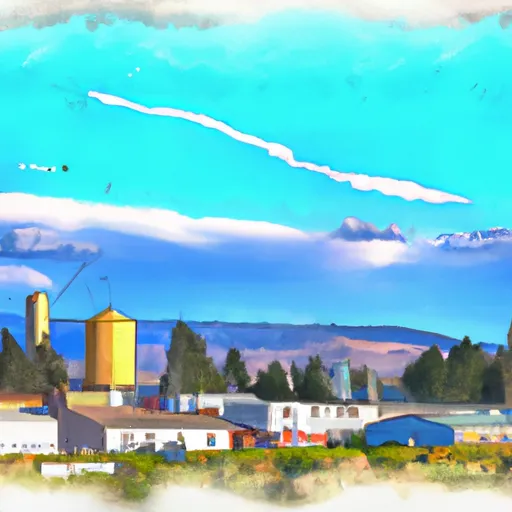-
 Snoflo Premium
Snoflo Premium
Get unlimited access to all our content
With no Ad interruptions! - Start Your Free Trial Login with existing account
Heron
Eden Index
Climate
8.5
•
Recreation
5.9
•
Community
•
Safeguard
5.5/10

Heron is a small town located in Sanders County, Montana. The climate in Heron is characterized by cold winters with temperatures dropping below freezing and mild summers. The area receives abundant rainfall and snowfall, with precipitation being the primary hydrology constituent in the region. The Clark Fork River, which flows through Heron, is an important water source for the area. The town offers a range of outdoor recreation opportunities, including fishing, boating, and hunting. The Cabinet Mountains Wilderness, located near Heron, is a popular destination for hiking and camping. Visitors to the area can also enjoy birdwatching, wildlife viewing, and kayaking on the nearby Bull River. Overall, Heron is a beautiful and tranquil destination for nature lovers and outdoor enthusiasts.
What is the Eden Index?
The Snoflo Eden Index serves as a comprehensive rating system for regions, evaluating their desirability through a holistic assessment of climate health, outdoor recreation opportunities, and natural disaster risk, acknowledging the profound impact of these factors on livability and well-being.
Climate Health Indicator (CHI): 8.5
Heron receives approximately
917mm of rain per year,
with humidity levels near 68%
and air temperatures averaging around
7°C.
Heron has a plant hardyness factor of
6, meaning
plants and agriculture in this region thrive during a short period during spring and early summer. Most
plants will die off during the colder winter months.
By considering the ideal temperature range, reliable water supplies, clean air, and stable seasonal rain or snowpacks, the Climate Health Indicator (CHI) underscores the significance of a healthy climate as the foundation for quality living.
A healthy climate is paramount for ensuring a high quality of life and livability in a region, fostering both physical well-being and environmental harmony. This can be characterized by ideal temperatures, reliable access to water supplies, clean air, and consistent seasonal rain or snowpacks.
Weather Forecast
Streamflow Conditions
Pend Oreille
Area Rivers
Pend Oreille
Snowpack Depths
Pend Oreille
Reservoir Storage Capacity
Pend Oreille
Groundwater Levels
Recreational Opportunity Index (ROI): 5.9
The Recreational Opportunity Index (ROI) recognizes the value of outdoor recreational options, such as parks, hiking trails, camping sites, and fishing spots, while acknowledging that climate plays a pivotal role in ensuring the comfort and consistency of these experiences.
Access to outdoor recreational opportunities, encompassing activities such as parks, hiking, camping, and fishing, is crucial for overall well-being, and the climate plays a pivotal role in enabling and enhancing these experiences, ensuring that individuals can engage in nature-based activities comfortably and consistently.
Camping Areas
| Campground | Campsites | Reservations | Toilets | Showers | Elevation |
|---|---|---|---|---|---|
| Big Hank | 30 | 2,699 ft | |||
| Bull River | 28 | 2,192 ft | |||
| Devils Elbow | 42 | 2,611 ft | |||
| Porcupine Lake | 5 | 4,815 ft | |||
| Berlin Flat | 9 | 2,811 ft | |||
| Dorr Skeels | 7 | 2,327 ft | |||
| Spar Lake | 14 | 3,327 ft | |||
| Kit Price | 53 | 2,550 ft | |||
| Bad Medicine | 17 | 2,346 ft | |||
| Big Eddy | 34 | 2,218 ft |
Nearby Fishing
Nearby Ski Areas
Catastrophe Safeguard Index (CSI):
The Catastrophe Safeguard Index (CSI) recognizes that natural disaster risk, encompassing floods, fires, hurricanes, and tornadoes, can drastically affect safety and the overall appeal of an area.
The level of natural disaster risk in a region significantly affects safety and the overall livability, with climate change amplifying these risks by potentially increasing the frequency and intensity of events like floods, fires, hurricanes, and tornadoes, thereby posing substantial challenges to community resilience and well-being.
Community Resilience Indicator (CRI):
The Community Resilience Indicator (CRI) recognizes that education, healthcare, and socioeconomics are crucial to the well-being of a region. The CRI acknowledges the profound impact of these elements on residents' overall quality of life. By evaluating educational resources, healthcare accessibility, and economic inclusivity, the index captures the essential aspects that contribute to a thriving community, fostering resident satisfaction, equity, and social cohesion.

